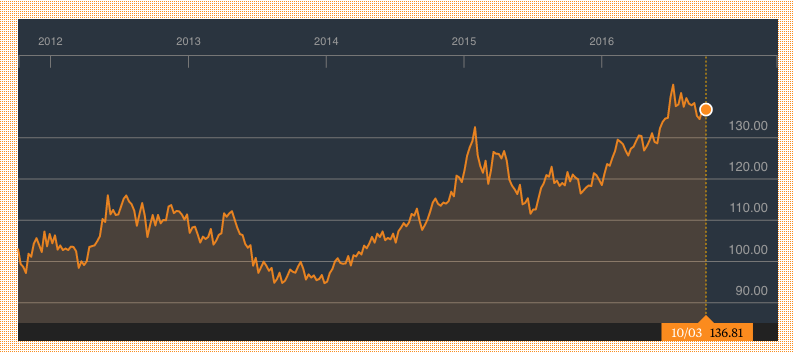Third-quarter earnings season is now fully past. As usual, some companies in our flagship Crabtree Technology portfolio fared better than others in terms of their operational performance (i.e., revenue growth).
In my opinion, two of our holdings stood out in this regard. Not only for how they performed in Q3, but also for how they are each addressing large, multi-year trends.
Green Dot Corp. (GDOT)
Market Cap: $3.2 billion
Green Dot does a lot of things, but it does one thing quite well. Green Dot is officially a bank holding company that primarily serves “un-banked” customers.
It does so by offering reloadable pre-paid debit cards. Card users can have their paychecks loaded directly on these cards, or simply re-load the cards with cash that they present at one of 100,000 agent locations.
These cards are often branded with Visa, MasterCard or another financial service provider’s logo, making them widely accepted.
And Green Dot has the right partners, including Wal-Mart, Intuit and Apple. Green Dot’s relationship with Wal-Mart is now 10 years old and has been renewed once during that time.
Walmart Connection
Green Dot Bank is the underlying issuer of Walmart’s pre-paid debt card known as MoneyCard. For this, Green Dot shares a revenue split of fees associated with MoneyCard usage.
Green Dot’s new initiative with Intuit involves creating a TurboTax-branded pre-paid card for users of that tax preparation software. Tax filers will be able to load tax refunds directly onto cards for almost immediate access to their funds, among other services.
And in early November, Green Dot and Apple went live with Apple Pay Cash, where users of Apple Pay who are receiving money via Apple Pay Cash will, in fact, be utilizing a dedicated Green Dot Bank account for that purpose.
Thereafter, those funds can be spent via Apple Pay, or transferred via Green Dot’s banking network.
Cashless Future
In my opinion, Green Dot is clearly riding the mega-trend toward a cashless future. So how is the company faring financially?
In its third quarter (ending September 30), Green Dot reported $0.34 in per-share earnings versus Street expectations for $0.27 (both non-GAAP) and then raised its own guidance for full year 2017 earnings to $2.10 – $2.12/share, up from prior guidance of $1.99 – $2.03.
Underscoring the strength of its business, Green Dot generated $19.6 million in Cash Flow from Operations in Q3 of 2017, more than twice the $8.5 million figure from the year-earlier quarter.

Care.com, Inc. (CRCM)
Market Cap: $560 million
Care.com, Inc. operates an online marketplace for providing and finding family care. These services include child, elder, special needs and other forms of in-person/in-home care.
This constellation of services ties in nicely with larger demographics trends including aging populations and two-earner households.
In addition to Care.com’s two-sided talent marketplace, the company offers payment solutions that facilitate paying caregivers as well as third-party services to employers that help employees arrange for care.
Impressive Earnings
In the quarter that ended on September 30, 2017, Care.com reported a modest 9% year-on-year revenue growth. But, in my opinion, the company’s 79% gross margin creates impressive earnings and cash flow leverage.
Third-quarter earnings per share were $0.18 versus only $0.02 in the same quarter a year earlier (both figures are non-GAAP). And Cash Flow from Operations in Q3 was $10.2 million versus only $1.5 million year-over-year.
Client families registered with Care.com rose 21% in Q3 to 15.0 million by the end of the quarter; total caregivers rose 19% to 11.4 million.
Third-quarter results and outlook were sufficiently good for management to raise their full year (2017) EPS guidance from $0.37 – $0.40 to $0.50 – $0.51. Revenue guidance was raised as well.
Winner-Take-All
Care.com may be much smaller than other online marketplaces like eBay, Amazon and Alibaba. However, in my view, it does share with those well-known firms the possibility of a winner-take-all outcome.
So long as a marketplace provides good value-for-money, then no one is likely to object to it being a service monopoly.
One of Care.com’s largest shareholders is Alphabet, the holding company for Google. Through a convertible preferred stock sale in June 2016, Alphabet holds roughly 13.5% of Care.com’s common stock, on an as-converted basis.
This arrangement also entitles Alphabet to elect one member of Care.com’s board of directors, further integrating the two firms’ share interests.
If regulators have stayed away (for now) from huge social and advertising networks like Facebook and Google, then in my opinion Care.com shouldn’t have a care in the world except serving its constituents.
Photo Credit: Tom Reynolds via Flickr Creative Commons
Disclosure: The investments discussed in this column were companies with better-than-average operational performance in the third quarter of 2017. Their selection for discussion was not based on their stock performance within the portfolio. The investments are presented for discussion purposes only and are not a reliable indicator of the performance or investment profile of any composite or client account. Furthermore, the reader should not assume that any investments identified were or will be profitable or that any investment recommendations or investment decisions we make in the future will be profitable.




